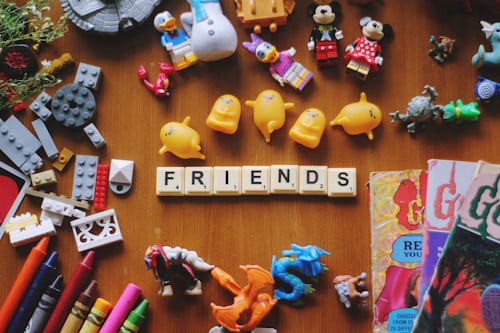I have an Instagram page where I post quotes from the novel I wrote, books I’m reading, funny memes, that sort of thing. Because I list myself as an author, I receive solicitations from people who want to sell me consulting services or offer me tools that I could use to promote my book (if I had one). I’ve noticed a trend in the way people are pitching to me lately that feels disingenuous.
They start off with a compliment (“Wow! You have great content!”) and then follow it up with a question (“How long have you been doing this?”). When I reply, they come back with another compliment (“That’s incredible!). And then they hit me with the sales pitch, which feels like the real reason they reached out in the first place. Do they actually think my content is great or are they only saying that to butter me up? I don’t have a problem with appreciation, as long as it’s real. But saying the same general thing to me as 50 other authors make me feel devalued.

I’m not interested in the services being pitched to me for a variety of reasons, but the sales people keep pressing, asking why not and if they can work around my hesitation. I have no doubt this strategy is an avenue for selling, and it likely works for some people, but for me it’s a huge turn off. My philosophy in business is to establish a relationship. I strive to be friendly with my clients because we’re both giving and receiving. I don’t want to take someone’s money and run – I want to provide a service that my client can actually use.
I’m reminded of a story from Tosha Silver’s book Change Me Prayers. She said for her first book, she shopped it around to several bookstores and in one store, the manager said, “You can leave a copy for our ‘pile’ in the back room. Then you could call a ton and plead with us. If you get lucky, maybe one day we’ll stock it. Just keep hoping.”
Tosha’s response was, “Oh, my God, no! Why would I keep twisting your arm? It’ll go easily to the places that are right. You never have to convince someone. The people who are right will just know.” And sure enough, that happened with other store clerks. They were thrilled at the idea of stocking her book and one even threw her a party. That’s what I want for me too (maybe not the party, unless it’s over Zoom!).

I want selling to be easy and smooth. That’s not to say no effort is required because of course action is always necessary, but the energy is different. Instead of twisting someone’s arm, pressuring them to work with me, I understand the right clients, customers, partners, etc. have already been selected and we’ll be guided to each other easily (and gratefully). I want to work with people who want to work with me. If I have to convince someone, are we a good match? Likely not.
I feel like especially now when most people are stressed, sliding in and out of depression, and struggling in some form or fashion, the best thing I can do is offer my services as a freelance ghostwriter, content writer, and editor. Emphasis on the “offer.” I’m opening my hands, saying “here you go,” and letting people take me or leave me. I’m not waving my hands in front of their face and saying “take this, take this, take this.” For me that makes all the difference.
If you’re a busy professional like a therapist in need of a ghostwriter, connect with me. If you’re looking for a unique way to promote your business through storytelling, I’d love to help with that too. If you just want someone to make sure your resume doesn’t have any typos, I can also handle that! Just reach out and I’d be glad to help.






